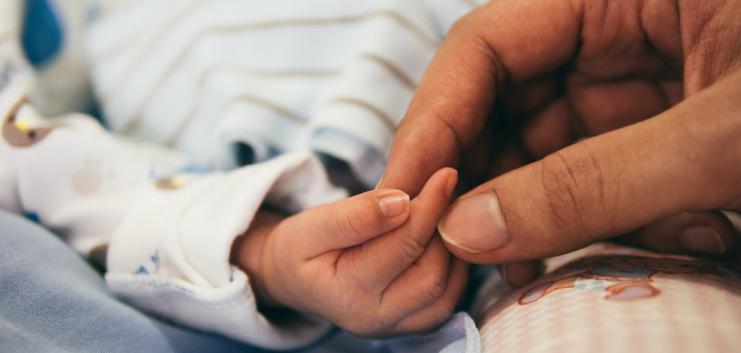La bronchiolite

Bronchiolitis
Bronchiolitis definition
Bronchiolitis is a highly contagious viral respiratory disease that usually strikes in mid-October and ends in late winter. It is caused by the respiratory syncytial virus (RSV).
Infants with RSV initially have what feels like a cold or nasopharyngitis. Then, the cough gets worse and breathing difficulties become more pronounced. In some cases, bronchiolitis disappears after 5-10 days but in others, it persists for several weeks or even leads to hospitalization.
These effects concern 30% of children under 2 years old and 1% of them end up in hospital.
Virus transmission
Children and adults carry the virus but usually only have a cold or are asymptomatic.
Like all viruses, bronchiolitis is transmissible in 2 ways:
- Through the air since the virus is found in saliva and is transmitted by coughing or sneezing.
- By touching furniture and objects.
Why is the bronchiolitis virus so contagious?
Last winter, between October 2020 and March 2021, barrier measures had to be strictly respected such as wearing a mask, constant use of hydroalcoholic gel and frequent hand washing. In addition, infants were not allowed to go to daycare or preschool.
The only "positive" effect of the COVID-19 epidemic was the drastic decrease of other diseases (influenza, gastroenteritis and bronchiolitis).
On October 20, 2021, a report of the High Council of Public Health, announced a significant number of children admitted to emergency rooms: 3,342 between October 21 and 27, 2021 and 1,138 children remained hospitalized.
The epidemic of bronchiolitis in the spring of 2021, had known half as many cases.
For an epidemic to be less virulent, a collective immunity must be reached during the first two years of the infant's life. However, in 2020-2021, too few children were infected and a stronger rebound in infants born in 2019, early 2020, is feared.
The higher peak in the winter of 2021-2022 could lead to a strong contamination of infants who have not experienced the virus.
How to prevent a strong epidemic?
There are simple methods to prevent the risk of infection:
- Maintaining the same barrier practices as last year, for those over 12 years old, is essential.
- Wash your hands frequently, you remove up to 90% of germs from your hands.
- Wear your mask in public spaces or when you have a cold and are taking care of your children.
- Avoid taking your child to public places at all costs in times of high epidemics.
In addition, sanitizing your living space is one of the most effective solutions to prevent bronchiolitis contamination.
You must air your home and your child's room at least 15 minutes a day.
The air purifier, the solution!
Alternatively, the air purifier is one of the most effective devices in filtering bacteria, viruses and VOCs of more than 0.1 micrometers (bronchiolitis is 0.15 nanometers). Equipped with a HEPA 13 or 14 filter, it will be your daily ally to limit the risks of cross-contamination of fine airborne particles.
Do not use burning incense or essential oils that release Volatile Organic Compounds.
Discover the field of action of our air purifiers against: